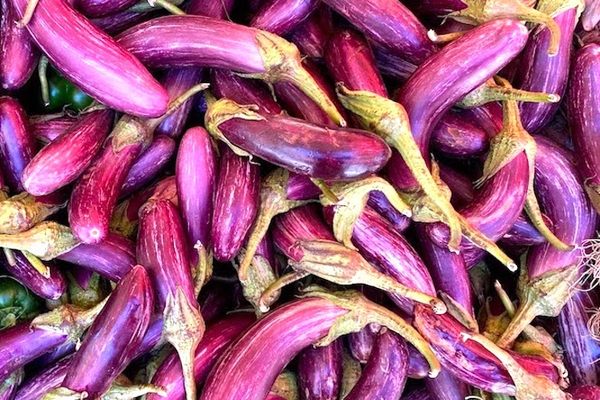After a long night of alcohol-doused partying in the nightclubs and neighborhood bars of Greece, joyful patrons seek out small diners and restaurants with signs out front declaring, “Serviroume patsa” (“We serve patsa”). When the sun and a hangover are both on the rise, the dish on many a Greek’s mind is patsas, a soup made with the tripe (stomach lining) and feet of a pig or cow.
Different versions of tripe soup are made in Eastern Europe, Turkey, and even Mexico. Early versions of patsas became widely eaten in Greece while the country was under Ottoman rule from 1453 to 1821. Today, the working-class soup is widely touted as a hangover cure and folk remedy for stomach ailments, often eaten as dinner or breakfast after a night of drinking and dancing.
Patsatzidika (restaurants that specialize in patsas) often serve up multiple varieties of the soup. Patsas is usually made either me kilia (with tripe) or me podarakia (with feet). The two are occasionally combined and accompanied by other organ cuts, such as the large intestine or pancreas. Chefs cube, pre-boil, then simmer the organs for hours to achieve a soft texture. They then flavor the offal with salt, pepper, lemon, and sometimes red pepper seeds and onion. Patsas is sometimes topped with kokkino (fat from the broth mixed with red pepper), skordostoubi (chopped garlic in vinegar), or red pepper shavings. The resulting soup is filling without being heavy. Some love it, some hate it. Yet, to this day, patsas remains a classic of the Greek hangover-cure repertoire.
Where to Try It
-
This 24/7 pastatzidiko is said to have the best patsas in Thessaloniki. They also serve a wide variety of other Greek dishes.
-
This classic pastatzidiko is located within in the Varkvakeios Central Meat Market in Athens. Along with patsas, they serve a variety of Greek soups and comfort dishes.
Written By
 Tatiana Harkiolakis
Tatiana Harkiolakis
Sources
- www.greece-is.com/lou-reed-liked-it-fine-at-zarouchas/
- www.athensmagazine.gr/article/restaurants/233602-gia-meraklhdes-ta-kalytera-merh-gia-patsa-sthn-athhna
- www.in2life.gr/delight/eat/article/569123/poy-tha-fas-ton-kalytero-patsa-ths-athhnas.html
- www.olivemagazine.gr/%CF%81%CE%B5%CF%80%CE%BF%CF%81%CF%84%CE%AC%CE%B6/%CE%B5%CF%83%CF%84%CE%B9%CE%B1%CF%84%CF%8C%CF%81%CE%B9%CE%B1-bars/%CE%B3%CE%B9%CE%B1-%CF%80%CE%B1%CF%84%CF%83%CE%AC-%CE%BC%CE%B5-%CE%B9%CF%83%CF%84%CE%BF%CF%81%CE%AF%CE%B1-%CF%83%CF%84%CE%BF%CE%BD-%CF%84%CF%83%CE%B1%CF%81%CE%BF%CF%8D%CF%87%CE%B1/
- giannisargyros.blogspot.com/2015/01/blog-post_13.html
- www.newsbeast.gr/greece/arthro/589085/patsas-to-piato-pou-travaei-apo-ti-muti-edo-kai-hronia-tous-kalofagades
- www.thessalonikiartsandculture.gr/thessaloniki/istories/ta-patsatzidika-tis-thessalonikis-kai-to-leksiko-tous/
- www.greekgastronomyguide.gr/item/oinomageirio-ipiros-agora-attiki/
- www.ahistoryofgreece.com/turkish.htm
- www.ough.gr/index.php?mod=articles&op=view&id=46
- www.thespruceeats.com/polish-tripe-soup-recipe-flaki-zupa-1137120
- www.seriouseats.com/recipes/2009/07/menudo-mexican-soup-red-chile-tripe-recipe.html
- www.thespruceeats.com/turkish-tripe-soup-hangover-cure-3274350
- www.enjoy-istanbul.com/food/turkish-tripe-soup-in-my-way/













